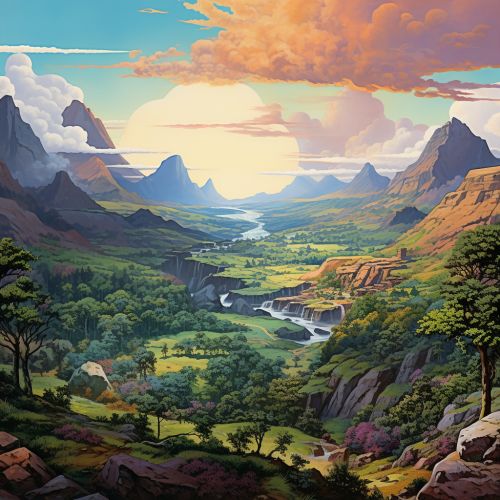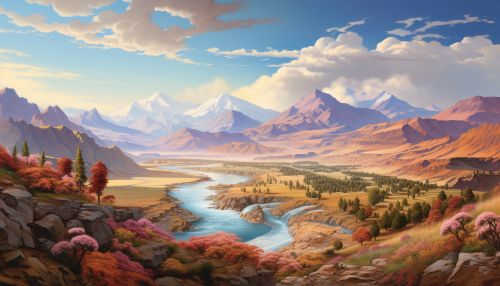Landform
Introduction
A landform is a natural or artificial feature of the solid surface of the Earth or other planetary body. Landforms together make up a specific terrain and their arrangement in the landscape is known as topography. Landforms include hills, mountains, plateaus, canyons, and valleys, as well as shoreline features such as bays, peninsulas, and seas.


Classification of Landforms
Landforms are categorized by characteristic physical attributes such as elevation, slope, orientation, stratification, rock exposure, and soil type. They may be formed by natural processes such as erosion and weathering, or by more violent events such as volcanic eruptions and earthquakes.
Erosional Landforms
Erosional landforms are features carved out of the landscape by processes of weathering and erosion. These processes, powered by the energy from the sun and the movement of water, wear away rocks and soil over time. Examples of erosional landforms include canyons, cliffs, and river valleys.
Depositional Landforms
Depositional landforms are created when material is deposited by natural processes. These processes include the movement of water, wind, ice, and gravity. Examples of depositional landforms include deltas, sand dunes, and moraines.
Volcanic Landforms
Volcanic landforms are created by the geologic processes of volcanism. These include features such as volcanoes, lava domes, and volcanic plateaus.
Tectonic Landforms
Tectonic landforms are created by the movement of the Earth's lithospheric plates. These movements can cause the Earth's crust to buckle, fold, or fracture, creating features such as mountains, rift valleys, and mid-ocean ridges.
Formation of Landforms
The formation of landforms involves a complex interplay of processes, including tectonic activity, erosion, deposition, and weathering. These processes are driven by a combination of endogenic forces (originating within the Earth) and exogenic forces (originating outside the Earth).
Tectonic Processes
Tectonic processes are responsible for the creation of the Earth's major landforms. These processes involve the movement and interaction of the Earth's lithospheric plates, which can lead to the formation of mountains, ocean basins, and other large-scale features.
Erosional Processes
Erosional processes, driven by water, wind, and ice, wear away the Earth's surface over time. These processes can create a variety of landforms, from the grand scale of canyons and valleys to the smaller scale of hills and ridges.
Depositional Processes
Depositional processes involve the accumulation of sediment and other materials, often transported by water, wind, or ice. These processes can create landforms such as deltas, sand dunes, and alluvial fans.
Weathering Processes
Weathering processes involve the breakdown of rocks and minerals at the Earth's surface. These processes can contribute to the formation of landforms by providing material for erosion and deposition.
Impact of Landforms on Human Activity
Landforms have a significant impact on human activity, influencing where people can live, the types of industries that can be developed, and the methods of transportation that can be used.
Settlement Patterns
The distribution of human settlements is heavily influenced by landforms. People tend to settle in areas that are flat and have fertile soil, such as river valleys and coastal plains. Mountainous regions, on the other hand, are often sparsely populated due to their rugged terrain and poor soil.
Economic Activities
Landforms also influence the types of economic activities that can be carried out in a given area. For example, flat, fertile plains are ideal for agriculture, while mountainous regions are often rich in mineral resources.
Transportation
The shape and arrangement of landforms can greatly affect transportation. Flat, open areas are ideal for the construction of roads and railways, while mountains and bodies of water can pose significant obstacles to travel.
